holoscience.com | The ELECTRIC UNIVERSE®
A sound cosmology for the 21st century

Antigravity?
According to the physicist, Lee Smolin, cranks are just a fact of life for working physicists.
“Several of us have speculated that there must be a particular psychosis that results in people believing that they have disproved relativity.”
New Scientist, 12 Jan 2002, reported that Evgeny Podkletnov is a Russian émigré whose claim to have demonstrated antigravity caused such a storm he was thrown out of his job at Tampere University of Technology five years ago. He now works as a researcher in superconducting materials at the nearby University of Tampere. He has recently convinced NASA to spend $600,000 on a machine he claims will shield matter from Earth’s gravity. The implication is that if it works it will open up a whole new branch of theoretical physics.
 In 1992 he published a paper describing how he had stumbled across a “gravity shielding” effect while running a routine test on one of his superconductors. The details were sketchy. But the basics are these: make a superconducting disc 145 millimetres in diameter and 6 millimetres thick, according to a special chemical recipe that Podkletnov did not make public. Cool the disc to below –233 degrees Celsius, then levitate it using a magnetic field. Finally, apply an electric current alternating at around 100 kilohertz to coils surrounding the disc. The current makes the disc rotate in the constantly changing magnetic field, something like an electric motor (see graphic). So far, there’s nothing extraordinary here.
In 1992 he published a paper describing how he had stumbled across a “gravity shielding” effect while running a routine test on one of his superconductors. The details were sketchy. But the basics are these: make a superconducting disc 145 millimetres in diameter and 6 millimetres thick, according to a special chemical recipe that Podkletnov did not make public. Cool the disc to below –233 degrees Celsius, then levitate it using a magnetic field. Finally, apply an electric current alternating at around 100 kilohertz to coils surrounding the disc. The current makes the disc rotate in the constantly changing magnetic field, something like an electric motor (see graphic). So far, there’s nothing extraordinary here.
But Podkletnov claimed that when the disc was spinning at more than 5000 revolutions per minute, objects placed above it lost around 1 per cent of their weight. Increasing the spin speed, he claimed, reduced their weight still further. In subsequent experiments, he claims to have seen weight reductions of up to 2 per cent.
Podkletnov concluded that this apparatus somehow reduced the strength of the Earth’s pull on any object placed above it and called it a “gravity shielding” device. Stick a more powerful version of this apparatus on the bottom of a spacecraft and rocket propulsion would be history: just the slightest nudge would be needed for lift-off into space. Terrestrial transport would be revolutionised too, together with a large chunk of theoretical physics.
Comment:
Here we see a tendency to ascribe observations that don’t fit the accepted paradigm to “new physics” or “new forces.” However, rather than add more barnacles to the heavily encrusted vessel of theoretical physics, the truly scientific approach would be to revisit all of the assumptions that underpin the accepted paradigm to see if they might be wrong. Unfortunately, it is at this point we are usually torpedoed by fashionable dogma, as shown by the opening comment from Lee Smolin, who also wrote:
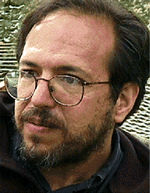
“What is space and what is time? This is what the problem of quantum gravity is about. In general relativity, Einstein gave us not only a theory of gravity but a theory of what space and time are–a theory that overthrew the previous Newtonian conception of space and time. The problem of quantum gravity is how to combine the understanding of space and time we have from relativity theory with the quantum theory, which also tells us something essential and deep about nature.”
In the words of the inimitable Harry Belafonte, “It was clear as mud, but it covered de ground, de confusion made me head go ‘round.’” Here we have the confusion about gravity, space and time, instigated by Einstein, to be compounded with ignorance about the physical meaning of quantum theory. We are about 80 years overdue for a simplification, rather than more complexity. If, by the attempt I must join the ranks of the cranks, then so be it. As one noted astronomer has said, “When the complete answer is not known, in a sense everyone is a crackpot.”
It is somewhat ironic that Einstein hated the probabilistic nature of quantum theory because it seems that the confusion created by his Relativity theories prevented a classical model being developed. That is, a model that relates cause and effect, and where time and space are not subject to dilatation. “God does not play dice,” he is reputed to have said. He felt that quantum physics could not possibly be complete because it cannot relate cause and effect and does not go beyond predicting the properties of matter statistically. Einstein, starting with the following three premises, showed that quantum theory was not a complete description of reality:
1. The predictions of quantum theory are correct
2. No effect can travel faster than the speed of light
3. If; without in any way disturbing a system, we can predict with certainty the value of a physical quantity, then there exists an element of physical reality corresponding to that physical quantity.
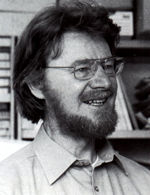 The Irish physicist, John Bell, was able to prove rigorously that any theory claiming to describe reality on the basis of (1) and (3) is automatically in conflict with (2). But rather than confront the possibility that (2) may be wrong at the level of fundamental particle interactions, physicists have preferred to enter the realm of metaphysics with meaningless terms like “spooky interaction at a distance”, “non-locality”, and “entanglement.” It has even been suggested that macroscopic objects behave classically but atoms and subatomic particles do not! The coherent behaviour of lasers , Bose-Einstein condensates, and on the grandest scale– the discovery of quantized redshifts of galaxies, should have disposed of that idea.
The Irish physicist, John Bell, was able to prove rigorously that any theory claiming to describe reality on the basis of (1) and (3) is automatically in conflict with (2). But rather than confront the possibility that (2) may be wrong at the level of fundamental particle interactions, physicists have preferred to enter the realm of metaphysics with meaningless terms like “spooky interaction at a distance”, “non-locality”, and “entanglement.” It has even been suggested that macroscopic objects behave classically but atoms and subatomic particles do not! The coherent behaviour of lasers , Bose-Einstein condensates, and on the grandest scale– the discovery of quantized redshifts of galaxies, should have disposed of that idea.
What can a simple answer possibly be? “God is subtle but he is not malicious,” Einstein said in 1921. But was it his “law” of the universal speed limit that stood in the way of further progress? We observe that gravity operates between atoms at a speed far greater than the speed of light. Otherwise the Earth would be tugged toward an empty point in space that the Sun occupied 8 minutes ago, and the Earth’s orbit would quickly change. If Newton was right and gravity does operate at near-infinite speed then Einstein’s Special Theory reduces to Euclidean space of 3-dimensions and time is universal. There is no reality to “warped space” and “space-time.” We return from fantasy-land to the world we perceive, which is probably a giant step back to the future. So, could it be that the force of gravity and the electric force are the same, and that the speed of light is merely the characteristic velocity of an electrical disturbance in the medium of space? After all, space is not a vacuum – it teems with neutrinos. That would be a major simplification.
The first problem with an electric gravitational force is that like charges repel and unlike charges attract, whereas gravity always attracts. A simple way out of that problem is to propose that electrons, protons and neutrons are composed of smaller orbiting charged units (which we may dub “subtrons”)* whose total charge sums to –e, +e and zero, respectively. The magnetic moment of the neutron and spin of the electron suggests that this is so. The stumbling block to such a model has always been the assumption of Einstein’s speed limit on the electric force between charged subtrons. For instance, it has been calculated that subtrons orbiting inside the classical radius of the electron would have a speed of 2.5 million light-years per second. That is the distance from here to the other side of the great Andromeda galaxy in one second! The speed of the electric force must exceed that by a considerable margin for the electron to be a stable particle.
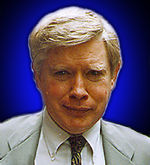 * The word “subtron” was coined by Ralph N. Sansbury in his monograph “Electron Structure” in The Journal of Classical Physics in January 1982. It led to a new classical explanation of magnetism and gravity.
* The word “subtron” was coined by Ralph N. Sansbury in his monograph “Electron Structure” in The Journal of Classical Physics in January 1982. It led to a new classical explanation of magnetism and gravity.
The electron, proton and neutron have not only a classical size but also a shape, which changes in response to the electric force. The electrical energy absorbed by these particles in deformation rather than acceleration gives rise to the phenomenon of inertial mass. It is the fundamental origin of the relationship E = mc^2. If gravity is an electrical force, we can see why the gravitational mass of a body is identical to its inertial mass. We have a real classical model with which to explain inertia, gravity, magnetism and quantum theory. Magnetism is a subject on its own to be dealt with later. But if we take an atom for example, it is a complex system of electrical resonances between orbiting charged subtrons within orbiting charged particles. A stable electron orbit is one in which the gain and loss of energy between a deformable electron and all of the subtrons in the other electrons and the nucleus sums to zero over that orbit. Electrons in an atom “whisper” to the nucleus in order to prevent the “classical catastrophe” of the electron spiralling into the nucleus. Changes in resonant state occur in quantum jumps and give rise to an un-cancelled oscillating electric force that may be accepted by another atom. An atomic nucleus operates in the same way, so that quantum tunnelling effects and nuclear interactions can be understood in resonant terms rather than simplistic coulomb barriers. The nuclear force is then another manifestation of the electric force between resonant subsystems within the nucleus. “Cold” fusion is possible in such a resonant system and radioactive decay has an electrical cause and can therefore be modified. It seems that electrons in composite (more than one proton) atomic nuclei are essential for resonant stability. When they leave a nucleus in the company of a proton we call the pair a neutron. Oddly enough, that resonant system is unstable, with the result that it has a lifetime outside the nucleus measured only in minutes.
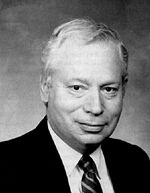
“…it may be that the next exciting thing to come along will be the discovery of a neutron or atomic or electron electric dipole moment. These electric dipole moments … seem to me to offer one of the most exciting possibilities for progress in particle physics.”
– Steven Weinberg, from his summary talk for the 26th International Conference on High Energy Physics at Dallas in 1992.
To return to gravity, each subatomic particle is itself a small sphere of orbiting charges, which will be distorted in an external electric field to form an electric dipole. Since each particle is free to rotate, the dipoles will align themselves with the field so that they always attract each other. Chemists who deal with dipolar molecules have already noted the similarity of their interactions to that of gravity. The distortion of the subatomic particles is exceedingly small and so the dipole is exceedingly weak. That accounts for the difference between the naked electric force and the gravitational force of some 40 powers of ten. An immediate objection to this model is that the force between dipoles falls off with the cube of the distance, while gravity diminishes with the square of the distance. But Newton’s law operates counter-intuitively as if the entire mass of the Earth were concentrated at the center of the Earth. The electrical model must take into account the real situation and integrate the effect of all of the dipoles throughout the Earth. The result is the usual inverse square relationship.
Newton developed a mathematical expression that related an apparent force, gravity, between ponderous objects, to their masses and the distance between them. The expression involved a constant, G, given the grand title of the Universal Gravitation Constant, with no evidence whatsoever of its universality or its constancy. The electrical model of gravity has G a variable that depends also upon the charge distribution in the body. That would explain why G is the most ill defined “constant” in physics.
The New Scientist report goes on to mention that:
“Podkletnov’s only current collaboration is with Giovanni Modanese, an Italian physicist who is trying to build a theoretical explanation for Podkletnov’s results. But because physicists have such a poor understanding of the mechanisms behind both gravity and high-temperature superconductivity, his explanations are necessarily vague. He suggests that quantum processes within the superconducting material are interacting with quantum processes in the gravitational field. But, he admits, he can’t go far with the work because there are too many unknowns.”
We can understand his problems! However, the electrical model may offer a basis for understanding the Podkletnov experiment. When the thermal energy of a conductor is reduced to a level where it becomes a superconductor, the resonant behaviour of the conduction electrons extends throughout the entire conductor and is lossless. The atomic nuclei are also involved in the macroscopic resonance and that may explain why particular atomic nuclei in particular proportions work best as superconductors. It is a curious fact that conduction electrons in a superconducting magnet have an inertia that is the square of the number of electrons, instead of the normal Newtonian linear relationship. This seems to be telling us that the electrons in Podkletnov’s spinning superconducting disk are able to absorb energy more by distortion than by acceleration. Now, if we envisage the electric force of gravity acting on a static horizontal disk, it distorts all of the subatomic particles in the disk in the direction of the gravitational force and consequently forms small vertical electric dipoles. If we spin the disk, there is an accelerative force toward the center of the disk, which will distort the particles radially. These particle distortions must rotate through 360 degrees for each revolution of the disk. But as we have seen, superconductors fiercely resist such accelerations so there will be a lag in orientation of the dipoles.
All that is required to provide a gravitational shield like that claimed by Podkletnov is to have the gravitationally induced dipoles offset from the vertical by particle distortion. It seems probable that the effect would be more marked if the disk were rotated in the vertical plane. In that case the gravitational dipoles have to rotate through 360 degrees each revolution and the opportunity for offset from the vertical seems much greater. That could possibly explain the apparent loss of weight of gyroscopes demonstrated on TV by the controversial Eric Laithwaite.
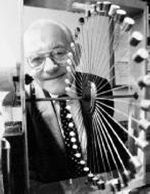 When Professor Eric Laithwaite [1921-97] was invited to give the Faraday Lecture in 1974-5 at the Royal Institution, he brought with him an array of gyroscopes – from toy ones that balanced on model Eiffel towers, to a huge 50lb one that he spun up and raised effortlessly above his head with one hand. “Look,” he exclaimed to the assembled dignitaries, “It’s lost weight!” ignoring their evident shock at such a heretical claim.
When Professor Eric Laithwaite [1921-97] was invited to give the Faraday Lecture in 1974-5 at the Royal Institution, he brought with him an array of gyroscopes – from toy ones that balanced on model Eiffel towers, to a huge 50lb one that he spun up and raised effortlessly above his head with one hand. “Look,” he exclaimed to the assembled dignitaries, “It’s lost weight!” ignoring their evident shock at such a heretical claim.
“I thought my fellow scientists would be genuinely interested, so I wasn’t prepared for the utter hostility of their reaction,” Laithwaite recalled later. The Royal Institution did not publish his lectures. Laithwaite’s nomination for the Fellowship of the Royal Society was cancelled. He retired from Imperial College in 1981 pretty much in disgrace. “None of my critics could ever explain to me how a 50lb spinning wheel loses weight,” he said.
At the very least, the work of Ampere, Gauss and Weber should be reexamined to see how Weber was able to deduce by 1870! the existence of the charged atomic nucleus and oppositely charged orbiting electrons, the classical electron radius, and the nuclear binding force. Some of these things had to wait until the 20th century for their eventual discovery, without any mention of the priority of the aforementioned distinguished scientists. So goes the scandalous politics of science. Their work demonstrated that the more general laws of the electrical behavior of matter must take into account all of the electrostatic and electrodynamic interactions between the positive and negative charges that comprise normal matter. By applying their methods to charged subtrons we may find the secret to antigravity.
Warped Minds
The best analogy I have seen of Einstein’s Special Theory of Relativity comes from a small book, The Logic of Special Relativity by S. J. Prokhovnik. In it he equates the apparent shortening of measuring rods and slowing of clocks when they move away from an observer at constant velocity to the diminution in size experienced by two receding travellers. The effect is reciprocal but no one imagines that the effect is real. Strangely, in effect that is precisely what Einstein did imagine and it has led to continual confusion and argument. Experiments were said to prove the effect was real but when examined closely each brought its own set of preconceptions to the data. The problem was compounded when it was argued that space itself shortened, not the rod. It is like saying that the receding traveller appears to shrink because the space he occupies is shrinking. And as space is shrinking it takes less time to cover a given distance. Here we see the insidious effect of this kind of thinking because we now have time and space tangled up together.
The British scientist, Herbert Dingle, for many years wrote the entry for the Encyclopedia Brittanica on Einstein’s Special Theory of Relativity before recanting. Then, in his book, Science at the Crossroads, he related the difficulties he encountered after he realized that Einstein’s version of the theory of relativity didn’t make sense. He wrote:
“The equations [Einstein or Lorentz as the need arose] worked, so the ‘experimenters’ became convinced that the theory, whatever it was, must be right. The superior minds acknowledged that they did not understand it, but the majority could not rise to that height. Nothing is more powerful in producing the illusion that one understands something that one does not, than constant repetition of the words used to express it, and the lesser minds deceived themselves by supposing that terms like ‘dilation of time’ had a self-evident meaning, and regarded with contempt those stupid enough to imagine that they required explanation. Anyone who cares to examine the literature from 1920 to the present day, even if he has not had personal experience of the development, can see the gradual growth of dogmatic acceptance of the theory and contempt for its critics, right up to the extreme form exhibited today by those who learnt it from those who learnt it from those who failed to understand it at the beginning.”
Mathematics is an indispensable and powerful tool where it has been demonstrated that it applies to a real world experience. However, it is inappropriate and, as Dingle points out, potentially dangerous, to give credence to deductions arising purely from the language of mathematics. The problem is that mathematicians now dominate physics and it is fashionable for them to follow Einstein’s example, with fame going to those with the most fantastic notions that defy experience and common sense. So we have the Big Bang, dark matter, black holes, cosmic strings, wormholes in space, time travel, and so on and on. It has driven practically minded students from the subject. There is an old Disney cartoon where the scientist is portrayed with eyes closed, rocking backwards in his chair and sucking on a pipe, which at intervals emits a smoke-cloud of mathematical symbols. Much of modern physics is a smoke-screen of Disneyesque fantasy. Inappropriate mathematical models are routinely used to describe the universe. Yet the physicists hand us the ash from their pipes as if it were gold dust. If only they would use the ashtrays provided.
“It seems that every practitioner of physics has had to wonder at some point why mathematics and physics have come to be so closely entwined. Opinions vary on the answer. Bertrand Russell acknowledged “Physics is mathematical not because we know so much about the physical world, but because we know so little.” …Mathematics may be indispensable to physics, but it obviously does not constitute physics.”
– Klein & Lachièze-Rey, THE QUEST FOR UNITY – The Adventure of Physics.